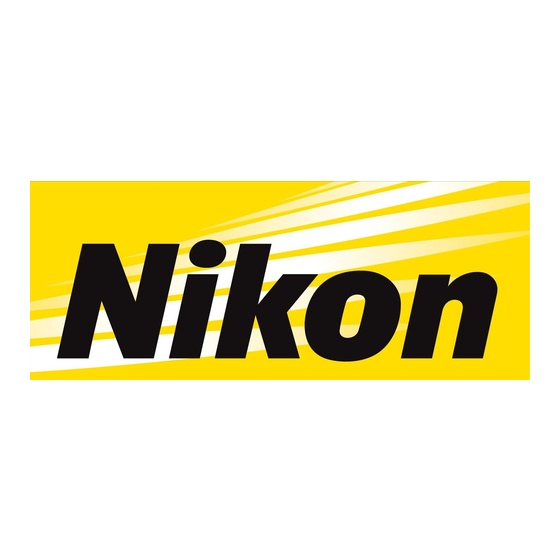Nikon N-STORM Посібник з експлуатації - Сторінка 5
Переглянути онлайн або завантажити pdf Посібник з експлуатації для Мікроскоп Nikon N-STORM. Nikon N-STORM 48 сторінок. Super resolution microscope
Також для Nikon N-STORM: Посібник користувача (11 сторінок)

Chapter
1
Terminology Used in This Document
Terminology Used in This Document
N-STORM
System that allows STochastic Optical Reconstruction Microscopy (STORM) with Nikon's inverted research microscope
Ti-E.
During STORM, some fluorescent probe molecules are randomly stimulated (activated) with relatively weak light to become
activated, after which their images are acquired through an EM-CCD camera (imaging). The series of images that is acquired
through frequent repetition of this process is analyzed and synthesized by software, and formed into a super-resolution
image.
Conventional image
Image of 256 x 256 pixels acquired using an EM-CCD camera. In STORM analysis, a set of sequentially acquired
conventional images is used as material.
STORM image (2D-STORM/3D-STORM image)
Super-resolution image generated as a result of analyzing a dataset of conventional images. It includes information such as
the position, size, and intensity of each individual fluorescent probe molecule.
A STORM image that only has information on the positions in the X- and Y-axis directions is referred to as "2D-STORM
image," while one that also has information on the positions in the Z-axis direction is referred to as "3D-STORM image."
Dye pair
Composite dye used for STORM observation, such as the following:
Examples: Alexa405-Alexa647
Cy2-Alexa647
Cy3-Alexa647
Probe
Fluorescent molecule (dye pair or monomolecular dye) used for STORM observation.
Dataset
Set of consecutive frames (conventional images) acquired through an EM-CCD camera. A dataset is saved in ND2 file format
for NIS-Elements.
Frame
Individual conventional image that is acquired through an EM-CCD camera as material to be used to generate a STORM
image.
Activation frame
Frame (image) that is acquired when relatively weak laser light for activation is emitted. This activation causes some
fluorescent probe molecules to become activated. Activation frames are not used for STORM analysis. Note that if images
are to be acquired in continuous mode, there is no difference between the activation and imaging frames because activation
and imaging are performed simultaneously.
1
1
